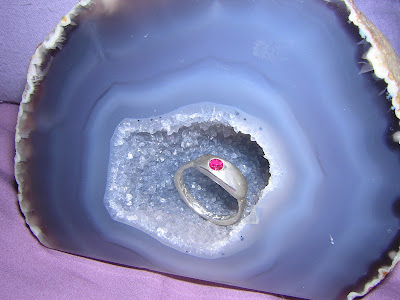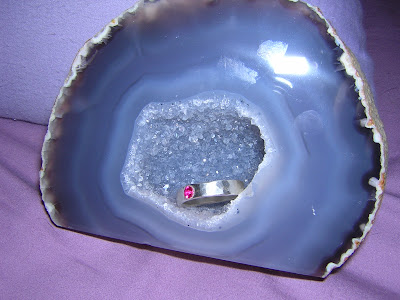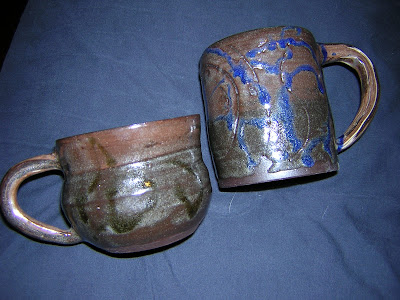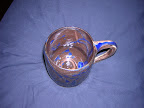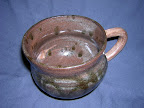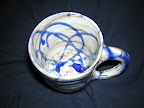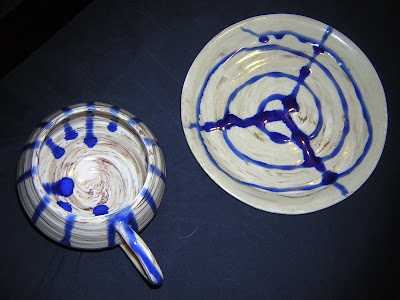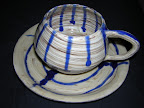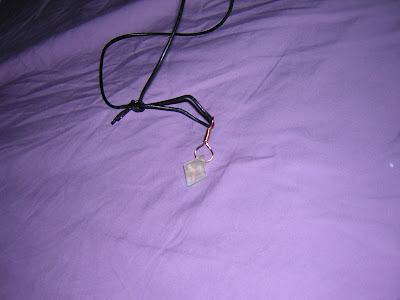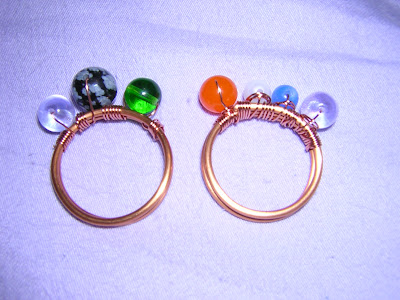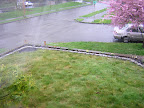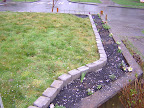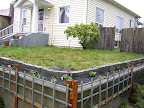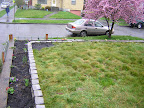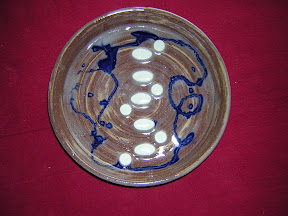
This is Karen in a cap I made for her out of Kureyon and a minty flaxen liner. I started the liner in the round and then switched to Kureyon after about 4 inches and then I folded the liner in and knitted it together with the outershell in a 4 inch headband and then I finshed the cap. The pattern is a 3 knit-purl-1x1-cable-purl.
the 1x1 cable twists every other round I think.
Howard Phillip is shown in the background.
I don't really have a hat pattern so much as an idea about how this kind of hat in the round works. The basic idea is that you start with headband that is calculated to fit from a measurement and a gauge swatch. The common wisdom length of the headband portion is 6" for a woman and 7" for a man. I think you can measure the distance from from the ridge of your eyebrows to the center top of your head and subtract 2" (for the decreases.) My head is 22" around and my flat stockinette gauge for this was 4.5 stiches to the inch. So I needed something in the area of 99 stitches.
It is a good idea to add ribs for extra stretchiness on the headband but you have to slightly alter your math to accomodate them. Ribs are vertical columns of alternating groups of knit and purls (k2p2 is a particularly good one.)
So having decided to do about 99 stiches... then it's time for the decrease math... Without ribs, choose a multiple of 7 that is near the target number. (Since 14*7 = 98 and 99 is our target, 98 is a good number of stiches to cast on.) I decrease by transfering to 4 double-pointed needles and then alternating decreasing rows and flat rows. The decreases also escalates in frequency in the following row pattern... (K2tog means knit two stiches together. )
1: (K5 K2tog)* This takes 7 stiches and decreases the last two to leave 6 stiches... 98 -> 84
2: flat
3: (k4 k2tog)* this takes every 6 to 5... 84 -> 70
4: flat
5: (k3 k2tog)* 5->4.. 70 -> 56
6: flat
7: (k2 k2tog)* 4->3.. 56->42
8: flat
9: (k1 k2tog)* 3->2.. 42->28
10: flat
11: (k2tog)* 2->1.. 28->14
12: repeat 11 until number of stitches is somewhere between 6 and 12. (2->1 again.. 14->7)
Ok so we went from 98(14*7) to 14 (14*1) over the course of 12 or so rows (2.5 inches or so) and then finished off with a decrease to leave us with a small number of stiches (7 finally.) Then using the remaining yarn tail (say about a foot) loop the tail through the 7 stiches and cinch them up in a loop and tightly weave in the tail (or tie it off if you prefer.)
Ribs can make a hat more functional and attractive but require slightly different math. A rib is a repeated vertically aligned knit-purl pattern like k2 p2 that makes vertical columns in yor knitting and has a footprint that is the number of stitches in the repeat. In k2p2, the pattern has a 4 stitch footprint and so to make the pattern lineup in the round you need to ensure that when you choose a multiple of 7 for decreasing, you also need to choose a multiple of 4. Since 7 and 4 are relatively prime, you have to choose a mulitple of 7*4 = 28 for the math to work out. Sadly the nearest multiple of 28 to 99 is 112 (28*4.) This is 13 stiches (almost 3 inches over the target value of 99.) Fortunately you can count on the ribs being a little more stretchy to accomodate 10%-20% depending on the rib pattern. This means that if the target is 22" we have 2"-4" of additional size allowed by the stretchiness of the rib. However, if we wanted to hit the target, we could instead of choosing 7, choose six as our magic decrese starting number, do the math and then start the decrease pattern at step 3. Also, note that since 6 and 4 are not relatively prime, instead of having to find multiples of 24 (6*4), you can look for multiples of 12.
Write me a comment if you have any questions.
